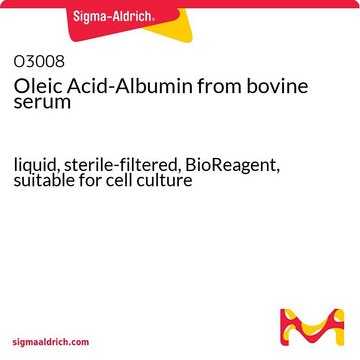P5585
Palmitic acid
BioXtra, ≥99%
Synonym(s):
1-Pentadecanecarboxylic acid, C16:0, Cetylic acid, Hexadecanoic acid, NSC 5030, PamOH
About This Item
Recommended Products
biological source
plant (vegetable)
Quality Level
vapor pressure
10 mmHg ( 210 °C)
product line
BioXtra
Assay
≥99%
form
powder
technique(s)
cell culture | mammalian: suitable
impurities
≤0.0005% Phosphorus (P)
≤0.1% Insoluble matter
ign. residue
≤0.1%
bp
271.5 °C/100 mmHg (lit.)
mp
61-62.5 °C (lit.)
solubility
chloroform: 0.5 M, clear, colorless
density
0.852 g/mL at 25 °C (lit.)
anion traces
chloride (Cl-): ≤0.05%
sulfate (SO42-): ≤0.05%
cation traces
Al: ≤0.005%
Ca: ≤0.0005%
Cu: ≤0.0005%
Fe: ≤0.0005%
K: ≤0.005%
Mg: ≤0.0005%
NH4+: ≤0.05%
Na: ≤0.05%
Pb: ≤0.001%
Zn: ≤0.0005%
functional group
carboxylic acid
lipid type
saturated FAs
shipped in
ambient
storage temp.
room temp
SMILES string
CCCCCCCCCCCCCCCC(O)=O
InChI
1S/C16H32O2/c1-2-3-4-5-6-7-8-9-10-11-12-13-14-15-16(17)18/h2-15H2,1H3,(H,17,18)
InChI key
IPCSVZSSVZVIGE-UHFFFAOYSA-N
Gene Information
human ... FABP2(2169) , FABP3(2170) , FABP4(2167) , FABP5(2171)
Looking for similar products? Visit Product Comparison Guide
Application
- as a medium supplement in chorionic villous tissue culture form placenta
- as a component of hormone pellet for implantation in mice ovary
- for inducing expression of immunity-related GTPase M (IRGM) in human monocytic cell line, THP-1
Biochem/physiol Actions
Storage Class Code
11 - Combustible Solids
WGK
nwg
Flash Point(F)
235.4 °F
Flash Point(C)
113 °C
Personal Protective Equipment
Choose from one of the most recent versions:
Already Own This Product?
Find documentation for the products that you have recently purchased in the Document Library.
Customers Also Viewed
Articles
Lipid Induced Insulin Resistance
Information on fatty acid synthesis and metabolism in cancer cells. Learn how proliferatively active cells require fatty acids for functions such as membrane generation, protein modification, and bioenergetic requirements. These fatty acids are derived either from dietary sources or are synthesized by the cell.
Our team of scientists has experience in all areas of research including Life Science, Material Science, Chemical Synthesis, Chromatography, Analytical and many others.
Contact Technical Service





